Dogs aren’t just pets — they’re loyal friends, constant companions, and beloved members of our families. Whether they’re greeting us at the door, wagging their tails in excitement, or curling up beside us on the couch, dogs have a way of filling our lives with unconditional love and joy.
It’s no surprise that nearly 59.8 million American households share their homes with a dog, according to the American Veterinary Medical Association.
But while dogs are adored for their loyalty and affection, not every breed is the perfect fit for every home. Some dogs have specific needs, temperaments, or energy levels that might make them a challenge for first-time owners or families with small children.
Understanding these traits isn’t about labeling dogs as “bad” — it’s about being informed and responsible so both pets and people can live happily and safely together.
In this article, we’ll take a closer look at certain breeds that may be best avoided for some owners — not because they’re inherently dangerous, but because their instincts, size, or training needs can make them difficult to manage without the right experience and environment.
Key Takeaways
Discover why breeds like Pit Bulls, Cane Corsos, and Border Collies might not be the best choice for first-time owners.
Learn how high-energy dogs such as Huskies, Jack Russells, and Weimaraners can be a real challenge to keep up with.
Find out why the lovable English Bulldog’s adorable looks come with serious health concerns.
See how choosing wisely can help you find a loyal, happy companion that truly fits your lifestyle.
Common Dog Breeds to Avoid
1. Pit Bulls
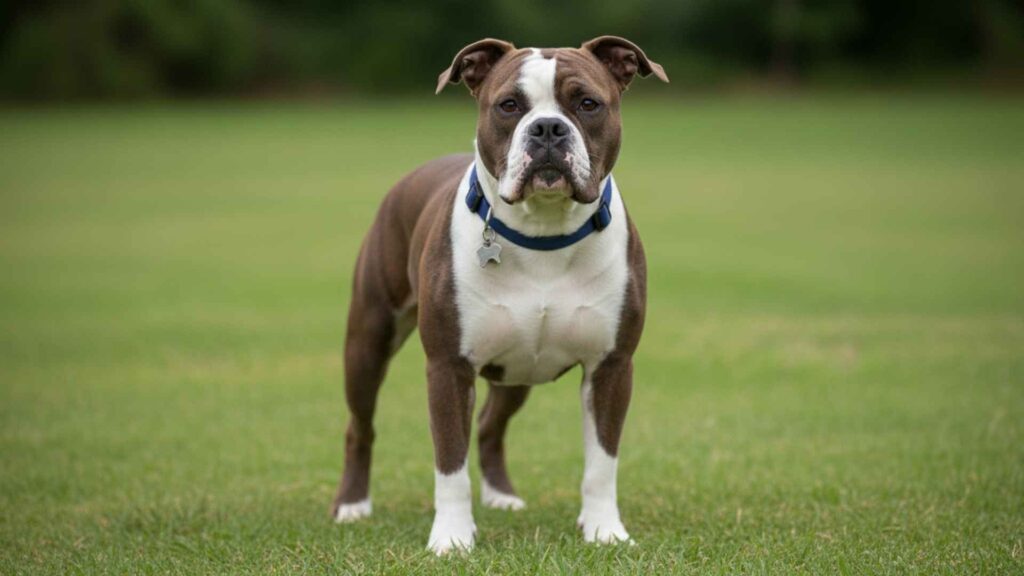
Pit Bulls are one of the most talked-about dog types in the world. They aren’t a single breed but rather a group that includes several bulldog and terrier mixes.
The name “Pit Bull” is an umbrella term often used for different “bully breeds.” Despite their tough image, many Pit Bulls are affectionate and loyal pets when raised in a loving home.
A Look Back
Britannica mentions that Pit Bulls were first bred in 19th-century England, Scotland, and Ireland by crossing Bulldogs and Terriers.
Originally known as Bull and Terriers, they were used for herding livestock and protecting farms. Sadly, some were also forced into fighting—an inhumane practice that’s now banned.
Temperament Today
Modern Pit Bulls can be playful, friendly, and deeply devoted to their families. However, their powerful build and strong instincts mean they need proper training and socialization from an early age.
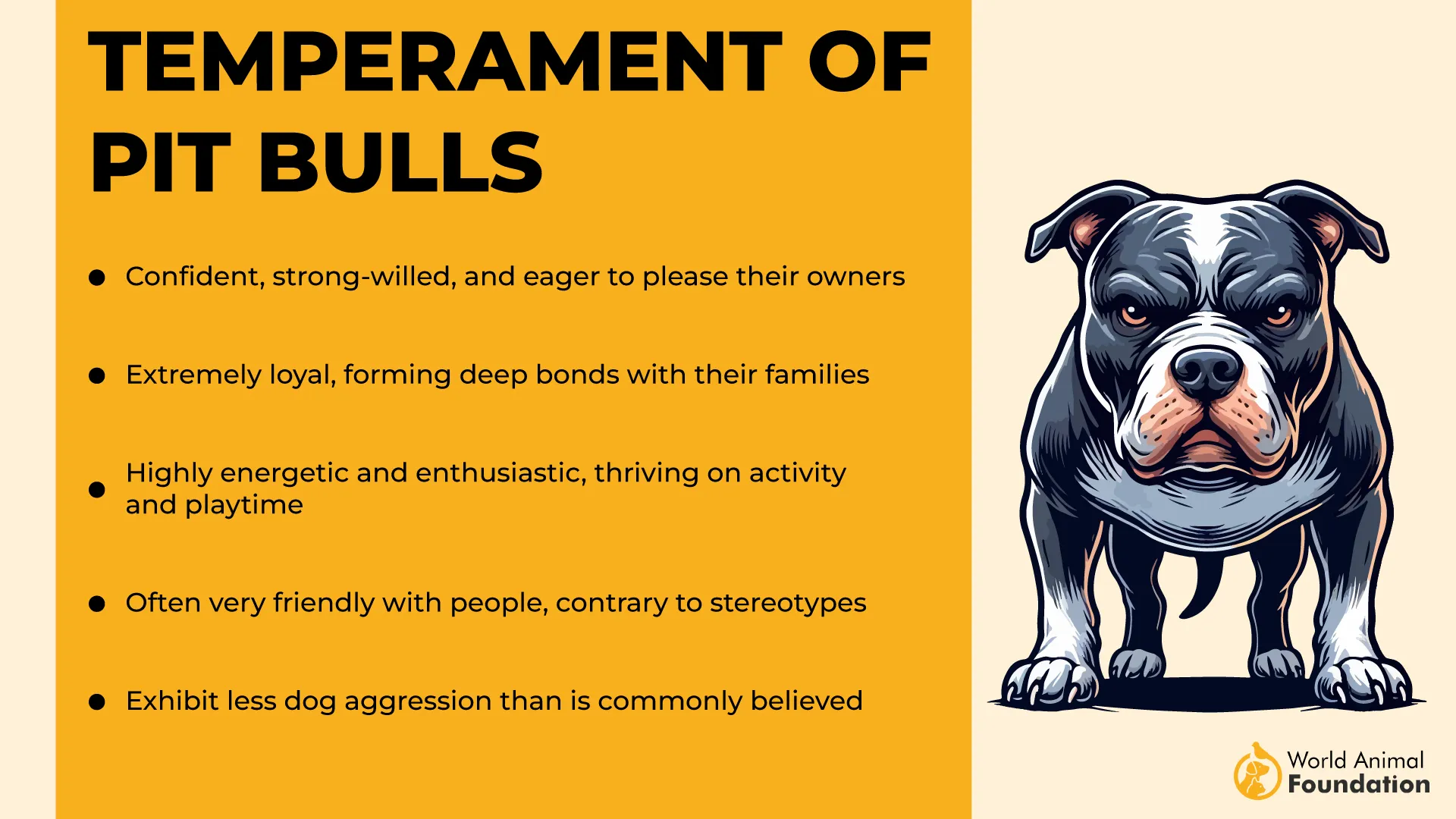
Their reputation for aggression often stems from poor ownership rather than the breed itself. With the right care and environment, Pit Bulls can be gentle, loving companions who want to be part of the family.
2. English Bulldog

You can’t mistake an English Bulldog for any other dog. With their wrinkled faces, short muzzles, and signature underbite, they have a look that’s both comical and charming. Their stocky build and rolling walk add to their one-of-a-kind personality.
Known for being kind yet courageous, Bulldogs are calm, loyal, and full of character. They’re great companions who adapt well to both city and country life.
Distinct Features
English Bulldogs have large, round heads with flat faces and dark eyes set low on their foreheads. Their droopy lips and chubby cheeks give them a unique grin that dog lovers can’t resist.
The loose skin around their face and neck adds to their distinctive appearance. Their coat is short, smooth, and glossy, and they come in a range of colors and patterns.
Health and Care
Unfortunately, their adorable looks come with challenges. Bulldogs are a brachycephalic breed, meaning their flat faces can cause breathing problems, especially in hot or humid weather. They’re also prone to health issues like hip dysplasia.
To keep them healthy, it’s important to manage their weight, provide light daily exercise, and avoid overexertion. When properly socialized and cared for, Bulldogs can live their entire lives happily and comfortably as the gentle goofballs they’re known to be.
3. Border Collie
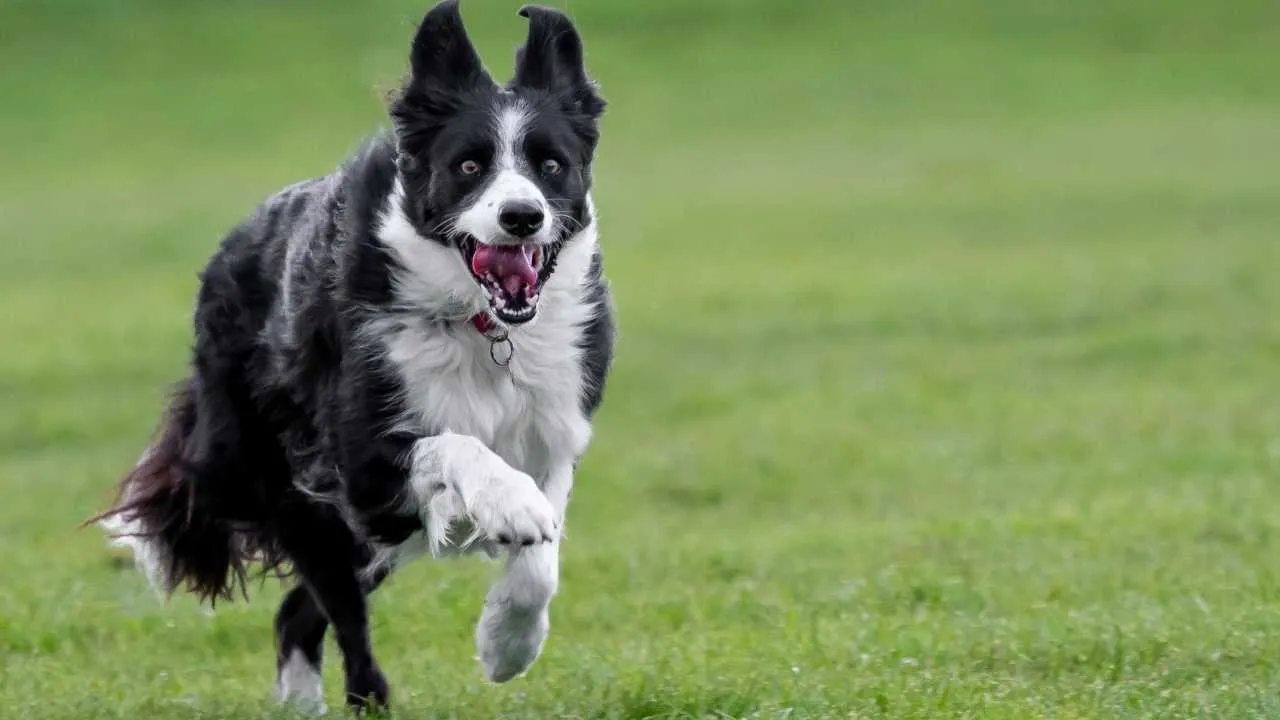
The Border Collie is a brilliant, energetic, and hardworking dog. Often called the most intelligent breed in the world, these dogs were born to stay busy.
They love having a job to do—whether it’s herding animals, running agility courses, or mastering tricks. For them, sitting still all day feels completely unnatural.
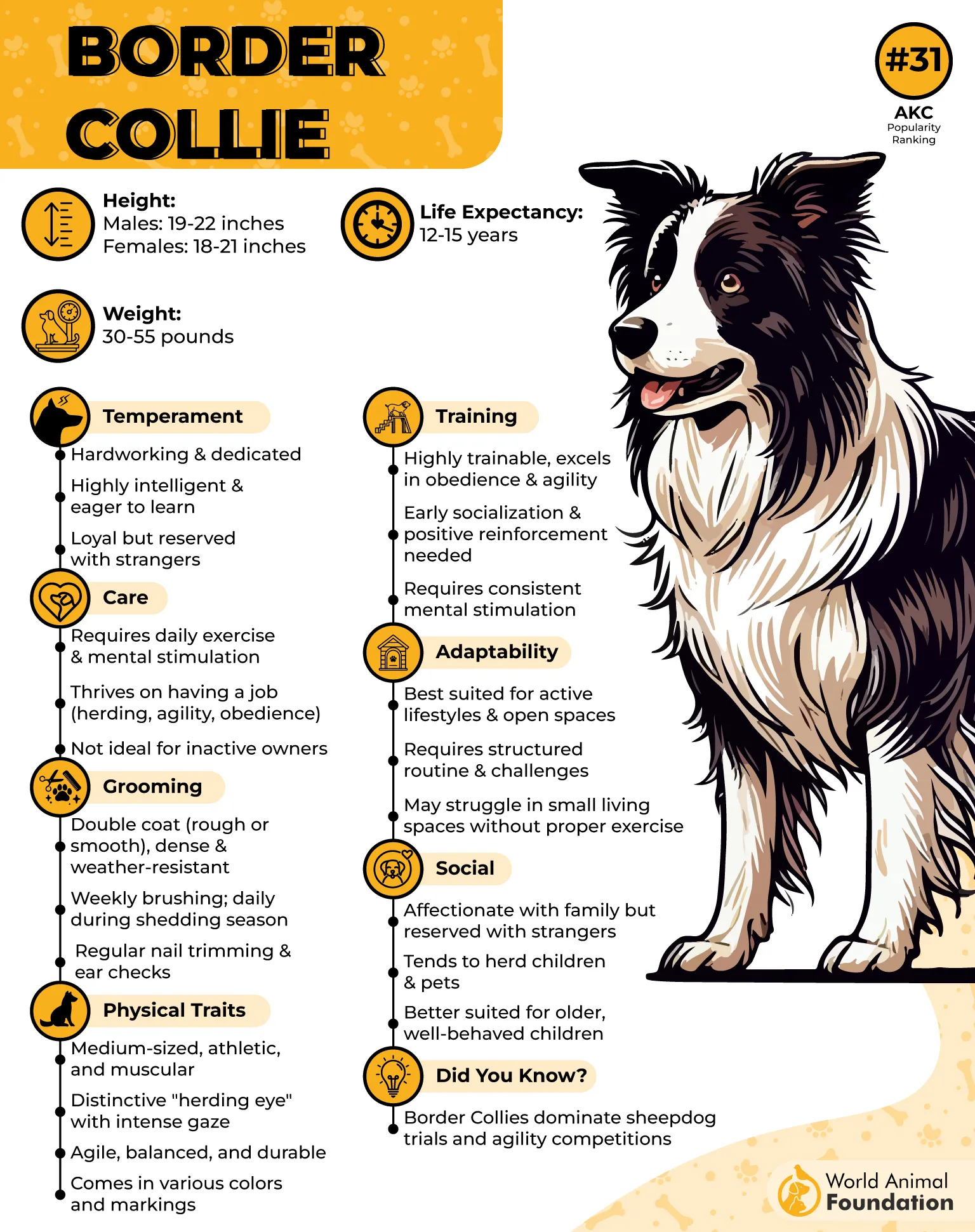
Personality and Behavior
Border Collies are playful, loyal, and eager to please, but they need constant mental and physical stimulation. Without enough activity, these energetic dogs can quickly become restless and destructive.
Their herding instincts are strong, which means they may chase smaller pets or even children out of habit. Because of their smarts and energy, they’re better suited for experienced dog owners who can give them plenty of time and attention.
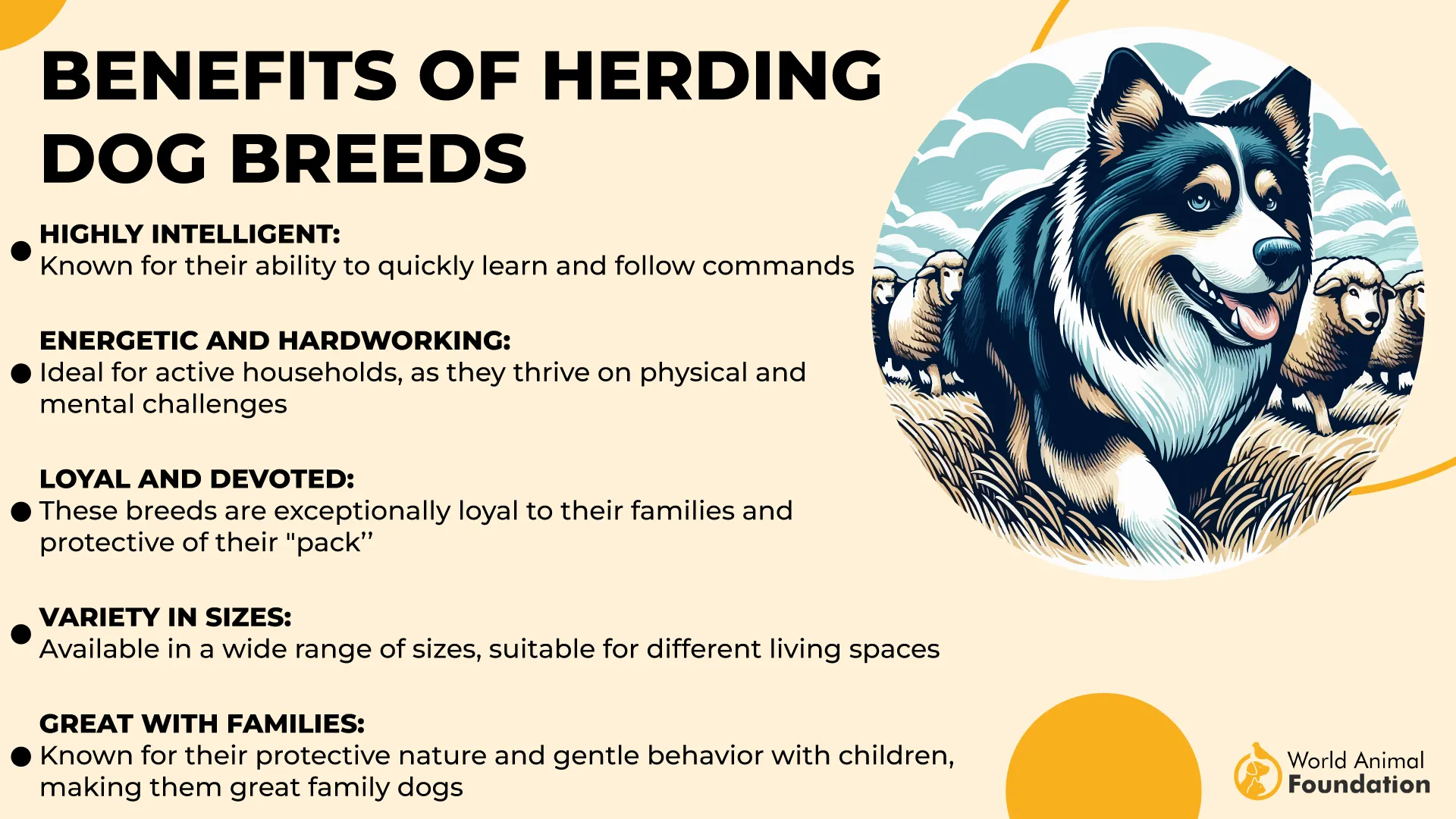
Health and Care
While Border Collies are athletic and tough, they can face health problems like hip dysplasia and epilepsy, as mentioned by PetMD. Regular exercise, a healthy diet, and proper vet care are important to keep them at their best.
If you can match their energy and need for challenge, they’ll reward you with loyalty and endless affection—but they’re not ideal for every lifestyle.
4. Jack Russell Terrier
The Jack Russell Terrier is a small dog with a big personality. Originally bred in 19th-century England by Rev. John “The Sporting Parson” Russell, these energetic terriers were created for fox hunting both above and below ground.
They’re quick, clever, and fearless—traits that made them excellent working and hunting dogs. Today, they’re still full of confidence and determination, often outsmarting even their owners.
Personality and Behavior
Don’t let their size fool you—Jack Russells are bursting with energy and curiosity. They love to run, dig, and chase anything that moves. These pups need daily activity and mental challenges to stay happy.
Without enough stimulation, they can become stubborn or destructive. They’re best for experienced dog owners who can provide consistent training and firm, yet gentle, guidance.
Care and Training
Jack Russells thrive when they have a job to do or a sport to master. Their high prey drive means a leash is a must during walks. They’re friendly and fun-loving, but not ideal for a laid-back lifestyle.
With the right training, companionship, and exercise, these little dogs become loyal, lively partners ready for any adventure.
5. Cane Corso
The Cane Corso, also known as the Italian Mastiff, is a powerful and impressive dog. Originally bred in Italy for hunting large game and guarding livestock, this breed is known for its strength, intelligence, and protective nature. Their muscular build and confident stance make them appear intimidating to many.
Temperament and Behavior
Cane Corsos are loyal and deeply devoted to their families. They form strong bonds with their owners and are natural protectors. However, they can be territorial and wary of strangers.
Without proper socialization and firm, consistent training, this protective instinct can turn into aggression. In fact, in some countries, these are considered one of the most dangerous dogs and are even banned due to safety concerns.
Care and Training
Because of their power and instinct to guard, Cane Corsos need an experienced handler. These large dogs thrive under clear leadership and structure.
Their strong prey drive and natural guarding tendencies require careful control and positive reinforcement. With the right training, they can be calm, affectionate, and reliable companions—but they are not ideal for first-time dog owners.
6. Siberian husky
The Siberian Husky is one of the most recognizable dogs in the world, known for its wolf-like face, striking eyes, and thick double coat.
Originally bred in Siberia as sled dogs to pull sleds over long distances, these dogs were made for endurance and teamwork. Their beauty and athleticism make them irresistible, but they’re not an easy breed for everyone to handle.
Personality and Behavior
These beautiful dogs are intelligent, energetic, and independent thinkers. They were bred to make decisions on their own in harsh Arctic conditions, so obedience doesn’t come naturally to them.
Their playful and social nature makes them great companions for active families, but their independence can turn into stubbornness if not properly trained. Without enough activity or stimulation, a bored Husky may become mischievous or destructive.
Care and Exercise Needs
Siberian Huskies need lots of exercise—far more than the average dog. Long runs, outdoor adventures, and mental challenges are essential to keep them happy. They love being around other dogs and enjoy plenty of space to explore.
However, their strong prey drive means small animals should be kept safely out of reach. While they’re friendly and clean by nature, Huskies require patience, consistency, and commitment from their owners to truly thrive.
7. Weimaraner
The Weimaraner is easy to spot with its sleek silver-gray coat and graceful build. Originally bred in Germany as a gun dog, this breed was designed for speed, stamina, and endurance.
They’re intelligent, friendly, and loyal companions who love to stay active. Their short coat may save you grooming time, but their endless energy will keep you on your toes.
Personality and Behavior
Weimaraners are affectionate and social dogs that crave attention from their families. They don’t like being left alone for long periods and can develop separation anxiety if ignored.
While they’re great with kids, their size and enthusiasm can be a bit much for smaller children. With their sharp minds and eagerness to please, they learn quickly but need firm, consistent training to stay focused.
Exercise and Care
This breed requires plenty of physical and mental stimulation. Long walks, runs, or outdoor adventures are a must. Without enough activity, they can become restless, anxious, or even destructive.
Weimaraners do best in active homes where they can burn off their energy and be part of daily family life. When their needs are met, they’re loving, loyal, and full of charm—a perfect fit for those who can keep up with their pace.
Conclusion
Choosing the right dog isn’t just about looks — it’s about understanding breed characteristics and finding a good match for your lifestyle. While a few breeds can be incredibly stubborn or high-energy, most dogs are loyal and loving when cared for properly.
Whether you’re a seasoned dog person or considering your first dog, it’s important for new owners to do their research and learn from reputable breeders. Remember, there are so many dogs out there — from rare breeds to mixed breeds — and each one deserves a loving home.
No two dogs are the same breed in spirit, and every pup comes with its own quirks. Some thrive outdoors while others are happy being a couch potato beside you. If you have other pets, consider how they’ll fit together.
With the right balance of patience, dog experience, and care, you can find not just a great dog, but the right dog — one that will be an amazing companion for years to come.
There are other breeds as well that may not be suitable due to their high-energy levels. These include the German Shepherd, Belgian Malinois, Golden Retriever, Alaskan Malamute, Chow Chow, Basset Hound, Labrador Retriever, Australian Cattle Dog, Rough Collie, and English Cocker Spaniel.


